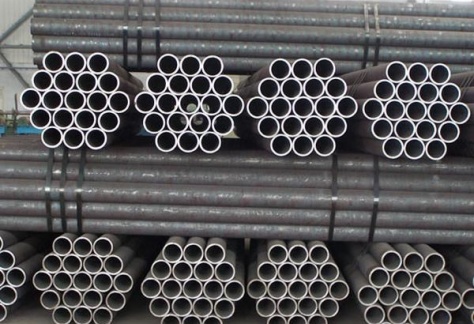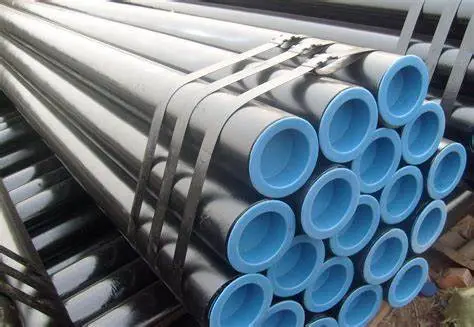Seamless steel pipe manufacturing technology leads the industry innovation and is widely used in the field of high-pressure transportation
Manufacturing Process and Advantages of Seamless Steel Pipes
Seamless steel pipes are produced by heating a solid round steel billet, which is then pierced, rolled, or drawn to form a hollow tube without any seams, hence the name "seamless steel pipe." Depending on the production method, seamless steel pipes can be categorized into hot-rolled, cold-rolled, cold-drawn, extruded, and jacked pipes. Additionally, based on cross-sectional shapes, seamleSs Pipes are divided into round and special-shaped types. Special-shaped pipes include square, oval, triangular, hexagonal, melon seed, star, and finned tubes, among other complex shapes, with diameters ranging from 4mm to 900mm.
The manufacturing process of seamless steel pipes ensures a uniform steel structure and excellent mechanical properties. The heating and normalization process during production guarantees consistent internal structure and stability. Compared to welded steel pipes, seamless pipes are perceived to have higher corrosion resistance and pressure-bearing capacity, making them capable of withstanding higher operational pressures and mechanical stresses. According to the American Society of Mechanical Engineers (ASME) standards, seamless steel pipes excel in high-pressure gas and fluid transportation, making them the industry's top choice.
Applications of Seamless Steel Pipes
Seamless steel pipes are widely used in various fields, particularly in high-pressure transportation scenarios. Key applications include:
-
Petroleum Geological Drilling Pipes: Used in oil and gas exploration and extraction, capable of withstanding extreme geological conditions and high-pressure environments.
-
Petrochemical Cracking Pipes: Utilized in high-temperature and high-pressure cracking reactions in the petrochemical industry, ensuring safe equipment operation.
-
Boiler Tubes: Employed in power plants and industrial boilers, capable of enduring high-temperature and high-pressure steam environments.
-
Bearing Tubes and High-Precision Structural Steel Pipes: Used in automotive, tractor, and aviation industries, providing high-strength and lightweight solutions.
Economic Benefits and Market Outlook
Although the initial cost of seamless steel pipes is higher, their long-term economic benefits significantly outweigh those of welded pipes. Since seamless pipes do not require welding during production, they avoid potential defects and risks associated with weld seams, reducing maintenance and replacement costs. Additionally, seamless pipes perform better in comprehensive testing, further minimizing safety risks during use.
With the continuous growth in global energy demand and the expansion of the chemical industry, the market demand for seamless steel pipes is expected to rise further. Particularly in high-pressure gas and fluid transportation, seamless pipes will continue to dominate due to their exceptional performance and reliability.
Conclusion
The ongoing advancements in seamless steel pipe manufacturing technology are not only driving innovation in the pipeline industry but also providing robust support for key sectors such as energy, petrochemicals, and power. In the future, with further optimization of manufacturing processes and expansion of application areas, seamless steel pipes will play an even more significant role in the global market, injecting new momentum into industrial development.

















